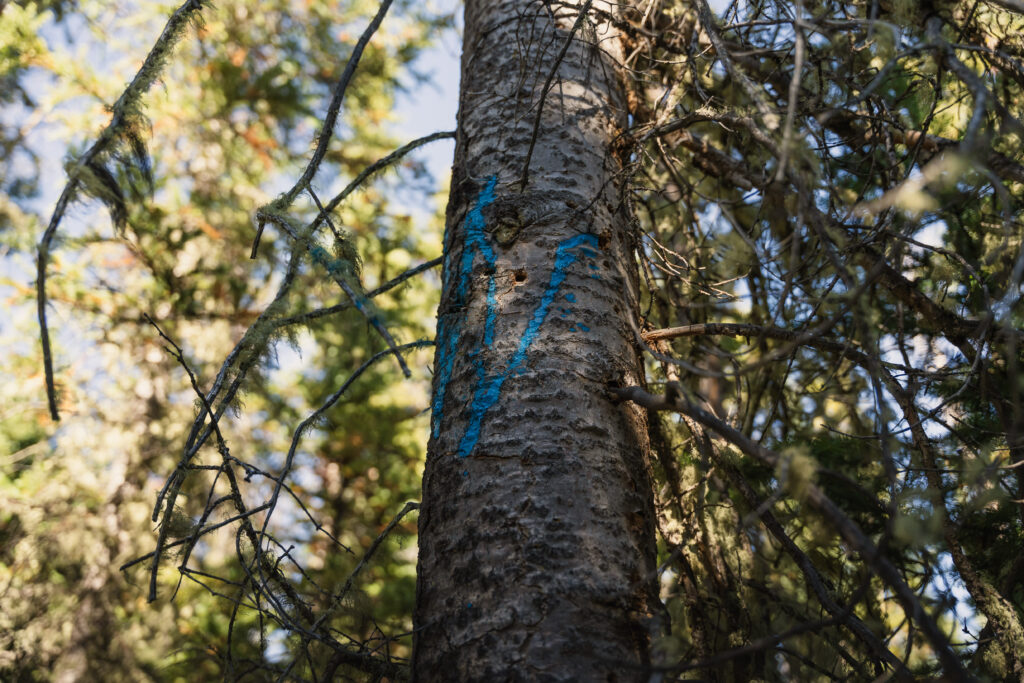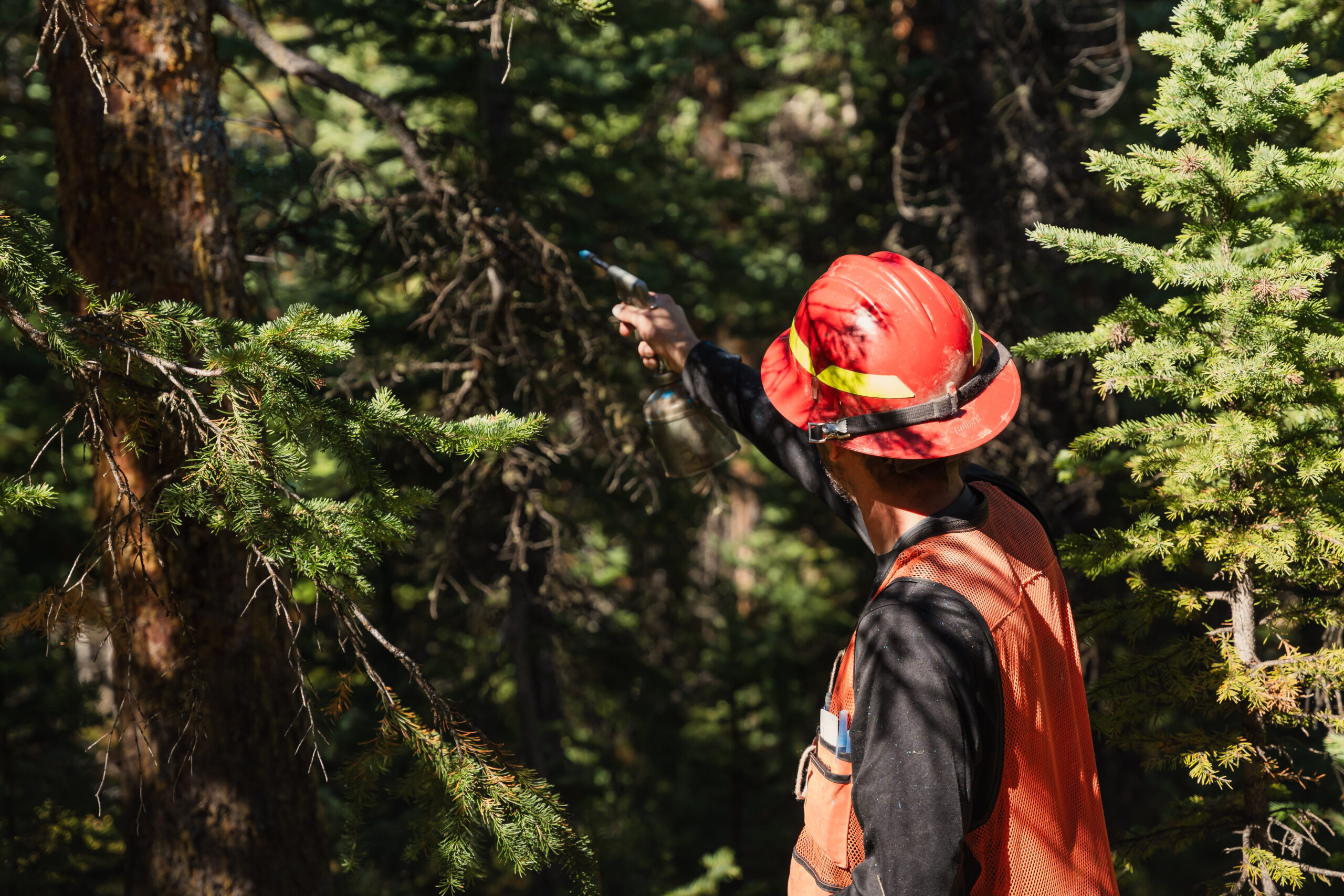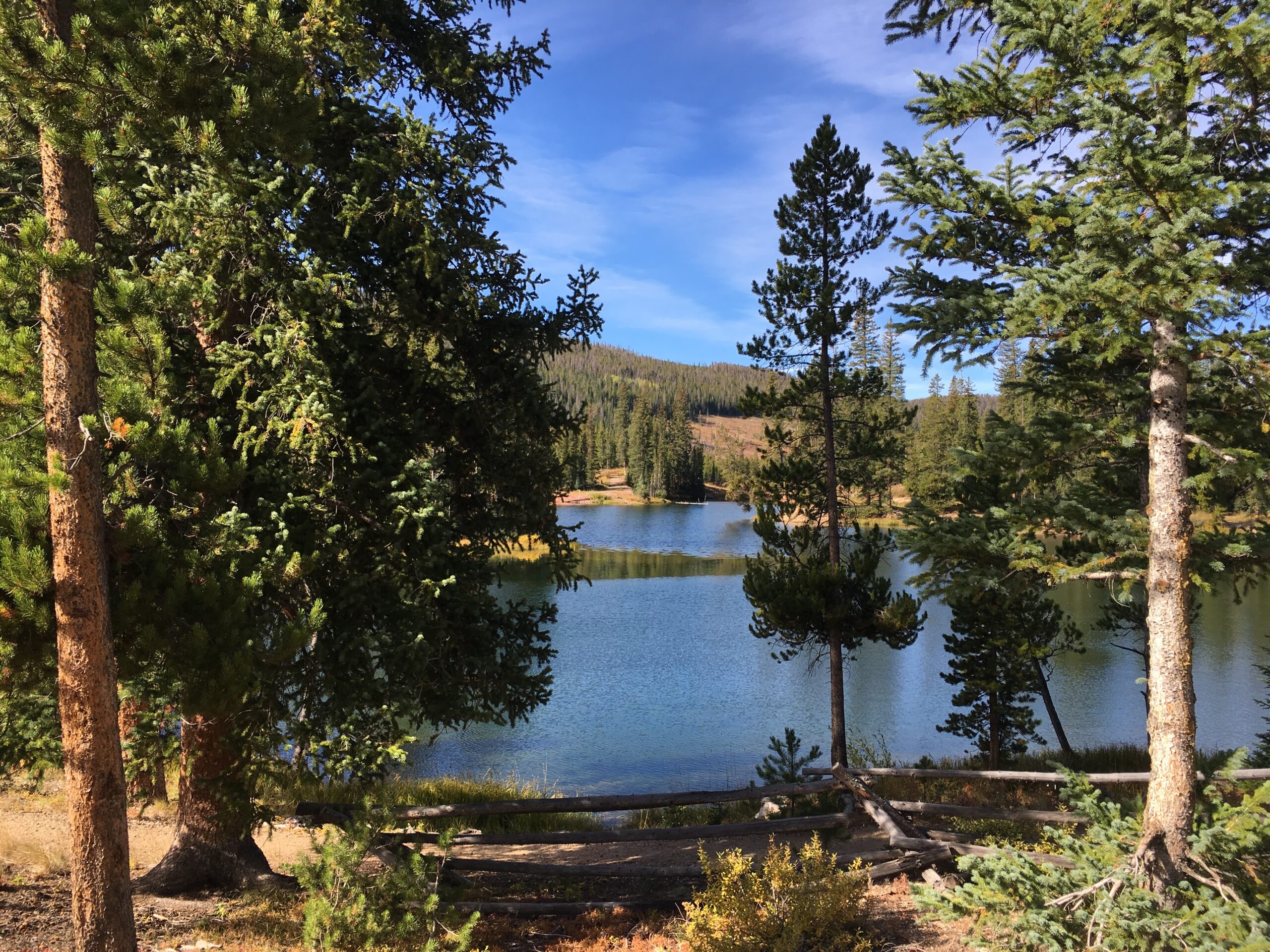Colorado State Forest
The Colorado State Forest Service is leading the development of an ASCC project site targeting high-elevation spruce-fir forests in northern Colorado. The Colorado State Forest is a 71,000-acre cooperatively managed State Trust property west of Fort Collins, near Cameron Pass. The State Forest is part of the Headwaters of the North Platte River, and provides additional water to the Cache La Poudre River via the Michigan Ditch Interbasin Transfer. Maintaining healthy forests in these high-elevation spruce-fir forests is critical in protecting these watersheds.
Key Projected
Climate Change Impacts
Key projected climate change impacts that the project team considered for the Colorado State Forest include:
- Altered seasonality: The CO State Forest is experiencing warmer temperatures, particularly hotter and drier summers
- Longer growing seasons: Winters are becoming shorter and milder, with less precipitation falling as snow and earlier snowmelt in the spring. This can cause vegetation to use up the soil moisture earlier and increase the risk of mid-late season drought
- Uncertain changing precipitation patterns: Projections indicate potentially less snow during the winter and/or less rain during the spring/summer that could impact seedling regeneration and survival
- Elevated drought risk: Forest vegetation may face increased risk of moisture deficit and drought during the growing season
- Increased potential for wildfires: Warmer and drier weather during the growing season may create conditions more suitable for uncharacteristic fires, decrease the fire return interval for high-elevation forests, and lengthen the fire season.

- Decreased winter precipitation and early spring snowmelt may also contribute to larger and more severe fires because of the diminished water stores in the soil that contribute to water stress
- Increased risk of insect pests and forest pathogens: Several native pests, including spruce bark beetle, spruce budworm, mountain pine beetle, and dwarf mistletoe currently affect forests across the region
- Increased disturbance and tree mortality: Many interacting stressors (weather, forests pests, invasive plants, deer herbivory, etc.) are already causing significant mortality in parts of the state and leading to changes in forest condition and composition
Climate change will present challenges and opportunities for accomplishing the management objectives of the Colorado State Forest including:

Challenges
- Potential increase in fire frequency within historically fire-infrequent spruce-fir forests alter vegetation dynamics:
- Fire often limited in these systems typically due to higher moisture availability and short temporal windows free of snow cover, however, climatic conditions conducive to fire spread and intensification and ever-present fuels indicate the high-risk of fire related to altered climate rather than altered vegetation dynamics (i.e. contrasting with high-frequency, low-intensity fire regimes)
- Large, contiguous areas of complete mortality owing to wildfire alter regeneration dynamics as seed source availability and regeneration conditions (e.g. moisture availability) are threatened, suggesting potential type conversions away from forests following severe wildfires
- Bark beetles are capitalizing on changes in climate: Bark beetle phenology is altered by warmer temperatures, both to the advantage and disadvantage of bark beetles (i.e. warmer temperatures can facilitate bark beetle population expansion, however they can also impact survival if certain life stages are not met before onset of winter temperatures)..Species such as spruce beetles and mountain pine beetles may be able to do more damage in warmer climate

- Warmer temperatures allow the beetle life-cycle to happen in a year or less-producing at least one generation a year Potential incursion of currently non-native bark beetles owing to warmer temperatures may additionally strain spruce-fir survival.
- Drought makes forests susceptible to beetle outbreak: within-tree resource allocation (i.e. growth, maintenance respiration, reproduction, defense) challenged by lack of sufficient water availability thereby limiting resource allocation to defense. Drought-stressed trees therefore become more susceptible to successful beetle colonization
- Reduced snowpack and/or warmer temperatures lead to drier soils, reduced streamflow, and earlier or more frequent droughts
- Spruce-fir forests require high moisture to regenerate, coupled with mature overstory removal in the form of bark beetles, canopy buffering of moisture removed, challenging successful regeneration
- Changes in tree species habitat. The combination of warmer temperatures, drought, and frequent disturbance could shift the site-specific, suitable habitat for tree species across the State Forest
- Tree species that are better suited to a cooler/wetter climate may move to a higher elevation to follow the cooler temperatures. Likewise, species suited to warmer climate may move higher as greater elevations warm past their usual temperatures These changes in species composition are likely to affect wildlife habitat and ranges Spruce fir forests may see more disturbance and mortality: Currently in terms of wildfires, spruce fir forests are a climate limited system, meaning that moisture levels determine the fire regime rather than the fuel characteristics The fire regime may change to more frequent, intense, and severe fires due to dry fuels from reduced precipitation and slow decomposition rates. These fires may also be larger, making regeneration of spruce-fir forests more difficult due to the limited distance these wind-dispersed seeds can travel
Opportunities
- Increased range: Tree species that are better suited to a warmer climate and found in low density on the State Forest Psuedotsuga menziesii (Douglas-fir), aspen, and Pinus ponderosa (ponderosa pine)), could expand their range.
- Assisted migration may also be an option to artificially increase or shift species ranges ahead of climate change to provide a viable seed source when these trees are ready to reproduce in a warmer climate
- Species respond individually: We may not lose all species at once and it is possible to find ones to replace the niches of the shifted species
- It will not be an immediate change. There is time to plan and work on the ecosystem transition
- Fire promotes species diversity: Fires can facilitate regeneration of a diverse mix of species post-fire. This creates a more resilient system due to more diverse sets of genes in the ecosystem that react to fires differently. This way there are many different strategies to deal with disturbance and a variety of species can excel depending on the severity and intensity of the disturbances
- Droughts hinder fungi growth: Fungi can be brought in by mountain pine beetles and begin to water stress the tree. If there is already a drought, the fungus has a much harder time taking hold
- Drought makes the tree’s leaves tougher and less palatable to pests

Management Goals & Treatments
Monitoring
Monitoring is an essential component of the ASCC study. Research partners from many institutions are working together to investigate the effectiveness of different silvicultural treatments aimed at creating adaptive ecosystems. Some of the monitoring items include:
- Residual tree survival and growth
- Natural regeneration survival and growth
- Planted regeneration survival and growth
- Microclimate conditions
- Understory plant cover and diversity
- Pollinator abundance
- Nutrient cycling
Progress & Next Steps
Each of the adaptation treatments will be replicated 4 times across a 400-acre (160-hectare) area on the Colorado State Forest. The Colorado State Forest Service is collaborating with key partners, including the Colorado State Forest Service Nursery, to determine potential seedlots for future-adapted seedlings. Pre-treatment forest inventory data is currently being collected on the study site and the treatment units will be implemented in the summer of 2023/2024. Future data will be collected at 1,2,3,5, and 10 years post set-up. It will focus on tree regeneration, forest growth, forest health, and carbon and nutrient fluxes, wildlife habitat, and water quality.
Site Leads & Partners
Blair Rynearson, Zach Wehr, Carolina Manriquez, and John Twitchell from the Colorado State Forest Service are the site managers helping lead the Colorado State Forest ASCC Project. Mike Battaglia (Rocky Mountain Research Station) and Ethan Bucholz (Colorado State Forest Service) are scientists helping lead the research efforts for the site.
Key collaborators include Marin Chambers (Colorado Forest Restoration Institute) and Lance Asherin (USDA Forest Service Rocky Mountain Research Station, RMRS), Paula Fornwalt (USDA Forest Service Rocky Mountain Research Station, RMRS), Chuck Rhoades (USDA Forest Service Rocky Mountain Research Station, RMRS), Zachary Steel (USDA Forest Service Rocky Mountain Research Station, RMRS), Wade Tinkham (USDA Forest Service Rocky Mountain Research Station, RMRS), Katie Nigro (ORISE fellow working with the USDA Forest Service Rocky Mountain Research Station, RMRS), and the Forest and Rangeland Stewardship Department at Colorado State University.

Blair Rynearson
Manager Site Lead
State Forest Manager Colorado State Forest Service 59228 Highway 14 Walden, CO 80480 Phone: 970-723-4505 [email protected]

Mike Battaglia
Science Site Lead
Research Forester Rocky Mountain Research Station, USDA Forest Service Forest and Woodland Ecosystems Science Program 240 West Prospect Road Fort Collins, CO 80526 Phone: 970-498-1286 [email protected]

Ethan Bucholz
Site Lead
Forest Monitoring Program Manager Colorado State Forest Service 3843 Laporte Ave. Fort Collins, CO 80521 Phone: 314-757-0387 [email protected]



